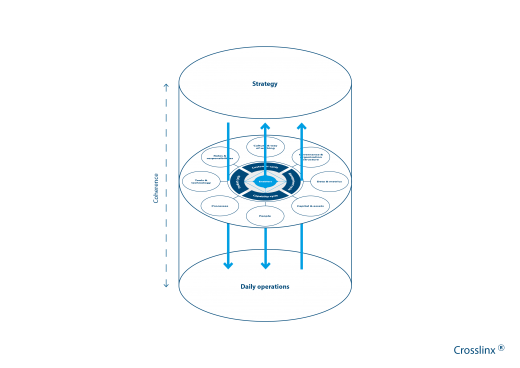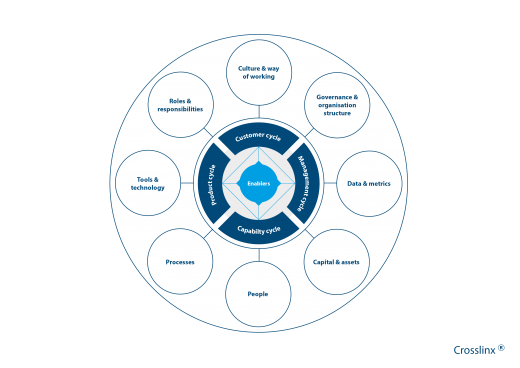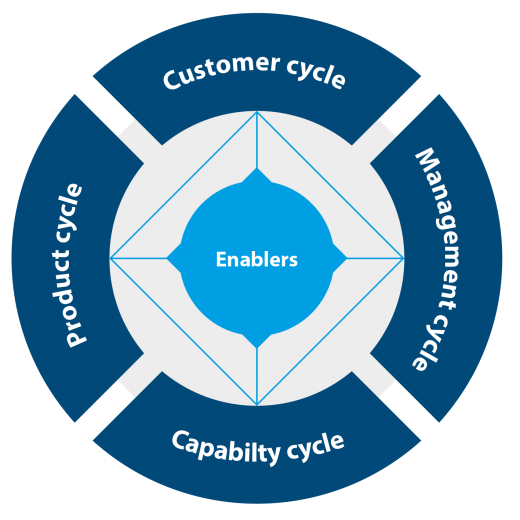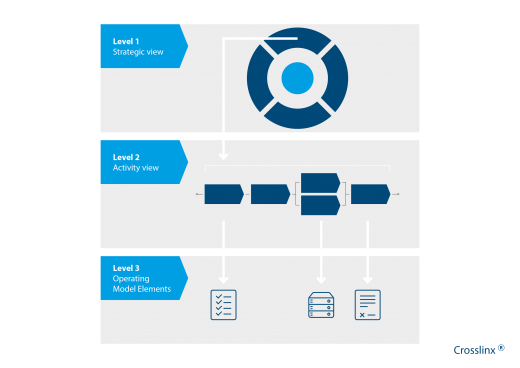
Successful organisations can be found in many different markets, with different go-to-market strategies, different operating models and different commercial objectives (profit/non-profit). But they all have one thing in common: they are capable of adapting their strategy to the changing business environment. The key to this lies in having control over the operating model.
Successful execution requires coherence between strategy and daily operations
In effect, an operating model is the representation of all relevant elements that constitute an organisation. It details how the organisation is internally structured to deliver the agreed strategy and envisioned value. To ensure successful implementation and execution, any adjustment to the strategy needs to be accompanied by corresponding changes in the operating model (i.e. the operating model must mirror the business model). In this sense, the operating model bridges the gap by creating coherence between the strategy and what the organisation actually does on a day-to-day basis.





